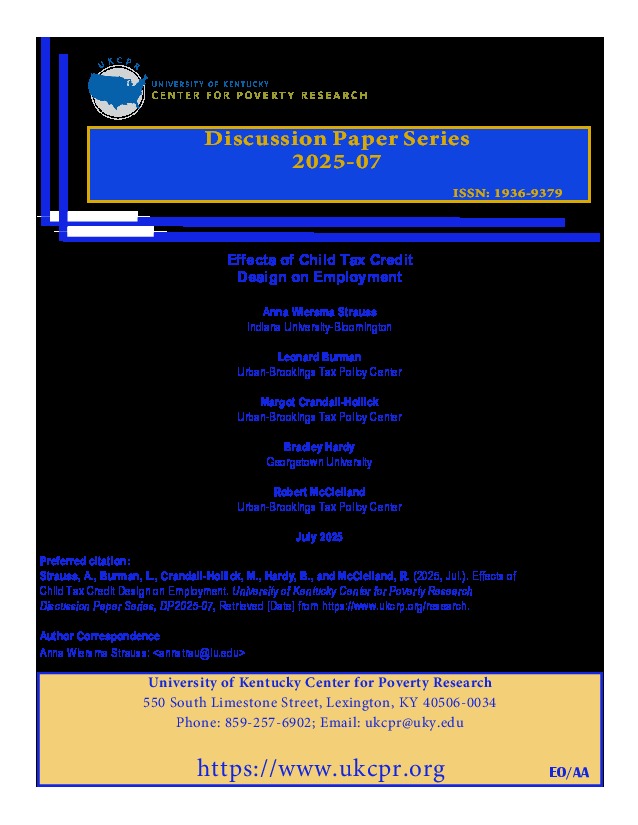Recent expansions of the Child Tax Credit (CTC) have generated interest in how the credit affects parental labor supply and child poverty. However, there is limited empirical evidence of the labor supply effects of the CTC outside of the context of the COVID-19 pandemic. We address this knowledge gap using 1997-2019 data from the Panel Study of Income Dynamics (PSID) to provide updated estimates of how low and middle-income parents’ employment responds to changes in incentives for three groups of parents: unmarried mothers, married mothers, and married fathers. We find the most elastic employment response for unmarried and married mothers, with estimated elasticities of 0.39 and 0.38, respectively, in response to changes in the return to work. Married fathers are least sensitive, with an estimated elasticity of 0.07. We then estimate small but statistically significant income elasticities of -0.025 and -0.132 for unmarried and married mothers, respectively. We also examine how parameter estimates differ based on children’s age and the parent’s education or race-ethnicity, as well as test the possibility that individuals respond differently to a change in cash wages than they do to economically equivalent changes in tax and transfer program incentives. We use these estimated parameters to simulate the employment effects of eight CTC policy options. We estimate that restoring the fully refundable CTC benefit schedule in place during 2021 would reduce overall employment by about one percentage point, while a fully refundable CTC only for children under age two would reduce overall employment by about 0.1 percentage points. Other reforms to make the CTC more valuable for lower-income workers would modestly increase employment. Our results show that policymakers could expand access to the CTC - including for low-income workers and parents of very young children – while having little effect on parental employment. These are timely considerations as policymakers consider whether to renew the current law CTC provisions – which are set to expire after 2025 – or expand eligibility.
Research
PovertyPDF Thumbnail
